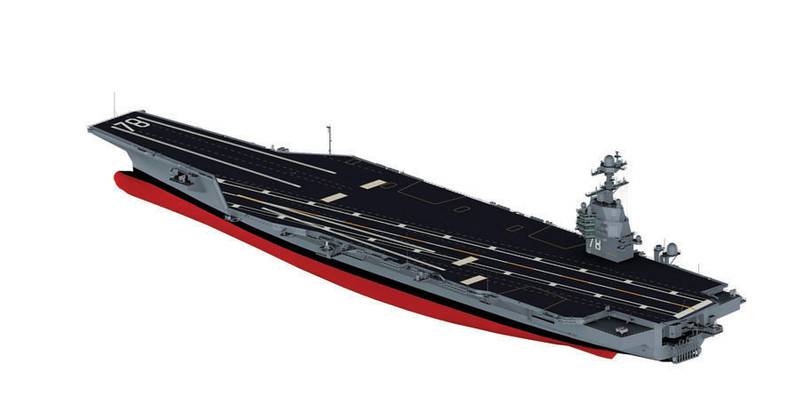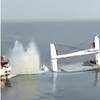Prelude By the Numbers
Out at sea, look! It’s a ship! It’s a floating rig! It’s SuperFLNG!
While not “faster than a speeding bullet,” Shell’s shipzilla Prelude is certainly more powerful than a speeding locomotive, and will be able to leapfrog in size, many of the world’s tallest buildings. By any definition, the super-size Prelude floating liquid natural gas (FLNG) vessel is gargantuan. And yet it is designed to cram everything you’ll find in a full-size, shore-based processing plant into roughly a quarter of the space.
Longer than four soccer fields and displacing six times as much water as the largest aircraft carrier, the FLNG facility will be the biggest floating production facility in the world when it debuts at some point in 2017 at an estimated cost of nearly $11 to $13 billion.
Investors in the Prelude Project include operator Royal Dutch Shell (67.5%), Inpex 17.5%, Korea Gas Corp. (Kogas) 10%, and Taiwan’s CPC 5%.
It can be hard to grasp the breadth and depth of a project of this scope but a picture is still worth a thousand words, so here are a few to help put things into perspective:
• Contents of 175 Olympic Swimming Pools – Amount of liquefied gas that can be stored in the facility’s storage tanks below deck.
• Six Nimitz–Class aircraft carriers - The amount of water the 200,000-tonne Prelude will displace fully loaded. The facility will weigh in at around 600,000 tonnes fully loaded, or six times as much as the largest aircraft carrier.
• Four soccer fields Plus – Equivalent length of the vessel, which will measure nearly half a kilometer in length (488 meters/1600 ft.), making it a few meters longer than the biggest oil tankers and almost as long as the fourth largest building in the world – the Shanghai World Financial Center, which stands at 492 m. The facility is also 74m wide.
• Arc de Triomphe - A structure that size could fit inside Prelude’s 93-meter (305-foot) high mooring turret, which will run through the facility.
• Two iconic bridges - Prelude will use 260,000 tons of steel, about five times more than was used to build the Sydney Harbour Bridge, and three times as much steel as was used to build the Golden Gate Bridge in San Francisco.
Other numbers that help illustrate the story:
• 3 trillion Estimated number of cubic feet of liquids-rich gas in Shell’s combined Prelude and Concerto fields.
• $30 billion The amount Shell is willing to spend up to in development, in the Australian region over the next five years.
• 50 million liters The amount of cold water that will be drawn from the ocean every hour, to help cool the natural gas.
• $45 million Expected boost to the local economy, including 1,000 jobs.
• 5.3 million tonnes The amount of liquids Prelude is expected to produce on an annual basis: 3.6 million tonnes of LNG, 1.3 million tonnes of condensate and 0.4 million tonnes of LPG.
• 117% The amount of Hong Kong’s annual natural gas demand that Shell estimates could be met by the facility’s annual LNG production.
• 1.6 million the number of engineering man hours invested into the front end engineering and design (FEED) phase of the development.
• 110,000 The number of natural gas equivalent 110,000 barrels of oil per day that Prelude will be capable of processing.
• 5,000 The number of workers who will build the LNG facility.
• About 3,000 The number of engineering drawings done for the project.
• 3,000 km Total length of electrical and other cabling installed on the facility, the distance from Barcelona to Moscow.
• 600 The number of engineers worldwide that have worked on the development phase of the Prelude FLNG project to define, design and evaluate plans.
• 220 km Amount of piping used in the vessel.
• 6,700 hp The power of each of three thrusters located in the rear of the Prelude FLNG; only two will operate at any one time.
• -162° Celsius (-260°F) the temperature at which natural gas turns into liquid natural gas (LNG).
• 1/600th the factor by which a volume of natural gas shrinks when it is turned into LNG
• 200 km (125 miles) The distance from the Prelude field in the Browse Basin to the nearest land.
• 7 The number of Prelude development wells.
• 4 The number of competitors particularly hot on Prelude’s heels with their own FLNG plans, including Petronas, ConocoPhillips, GDF Suez and Exxon- BHP.
• 20-25 years – The length of time Prelude is expected to stay moored over the gas fields before heading to dry dock for updates and repairs.
Milestones
Key milestones, Royal Dutch Shell’s FLNG facility to date:
• January 2007 – Discovery of gas in Prelude well.
• March 2009 – Discovery of gas in Concerto well.
• July 2009 - Shell awards the contract for the design, construction and installation of multiple FLNG facilities over a period of up to 15 years to a consortium of Technip and Samsung Heavy Industries, based upon Shell’s proprietary design.
• November 2010 – Environmental approval received for the project.
• May 20, 2011 - Prelude FLNG Project was announced as Shell takes Financial Investment Decision (FID) on the Prelude project.
• September 9, 2011 - Fabrication of Prelude well heads, marking the first ever steel cut for the Prelude Project.
• May 2012 - The first steel cut for the turret.
• October 2012 – First steel cut for the hull.
• January 2013 – Cutting of first steel for the the topsides.
• June 2013 - Construction started on the Prelude Darwin Onshore Supply Base.
• September 2013 - First Turret module shipped to Geoje.
• September 2013 - Development well drilling started.
• November 30, 2013 – Hull floated for the first time.
Source: Shell Australia
(As published in the July 2014 edition of Maritime Reporter & Engineering News - http://magazines.marinelink.com/Magazines/MaritimeReporter)
















